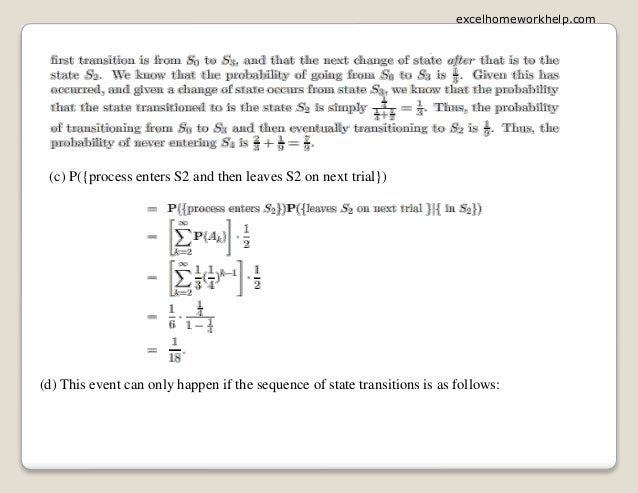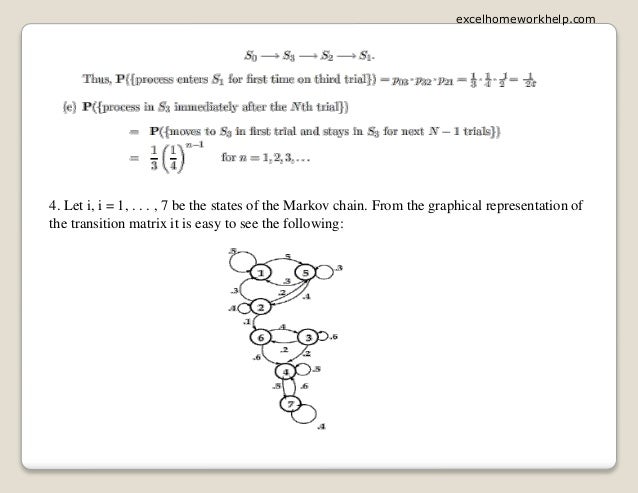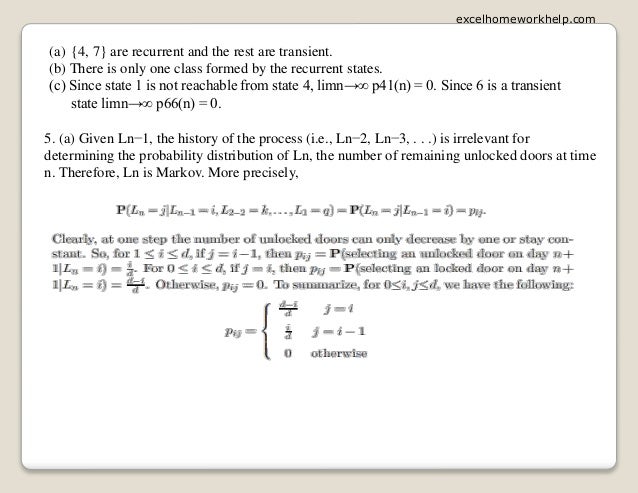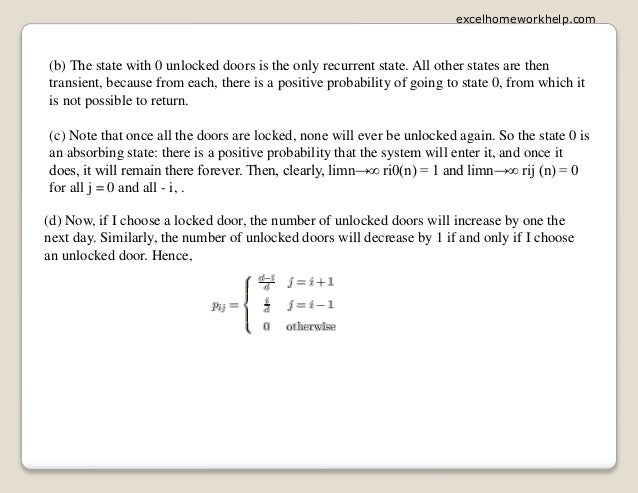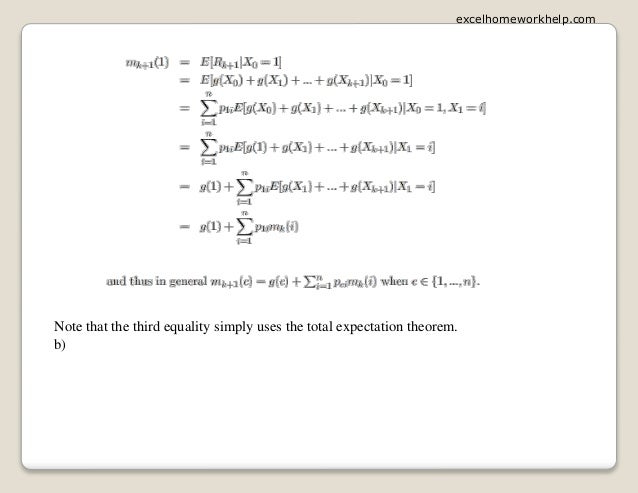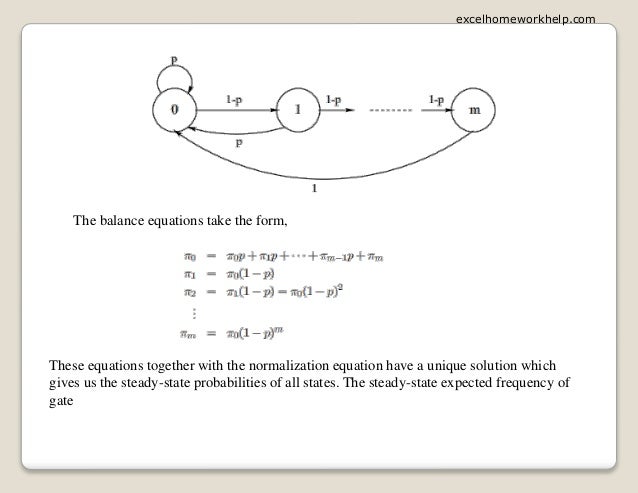The document consists of various problems related to probabilistic systems, specifically focusing on Poisson processes and Markov chains. Key topics include calculating probabilities for ship arrivals, shuttle passenger counts, and transitions in Markov processes, while evaluating their expected behaviors and distributions. It also discusses specific scenarios involving unlocked and locked doors represented as Markov processes.

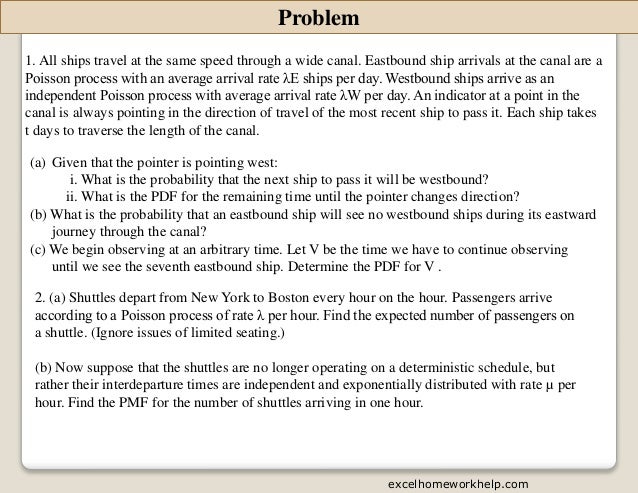
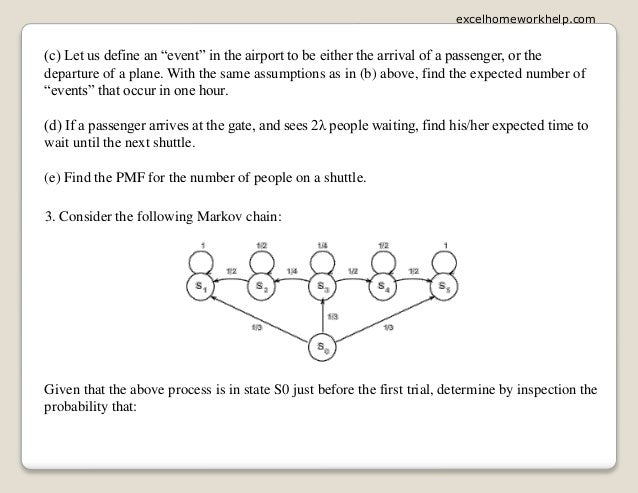
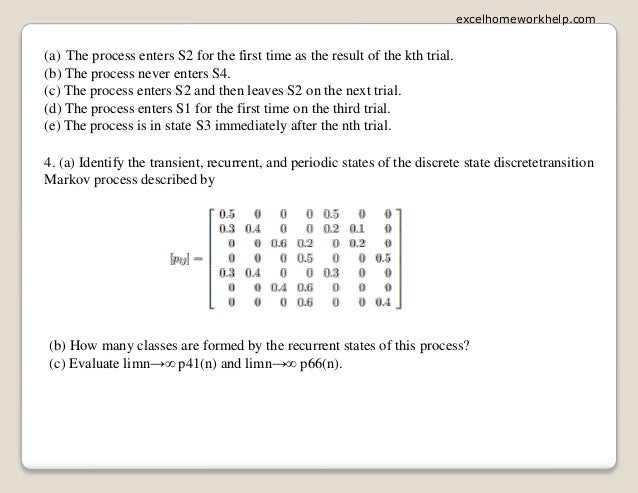
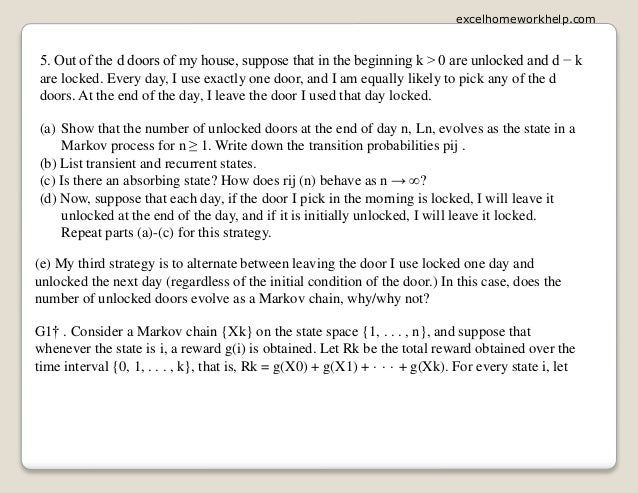
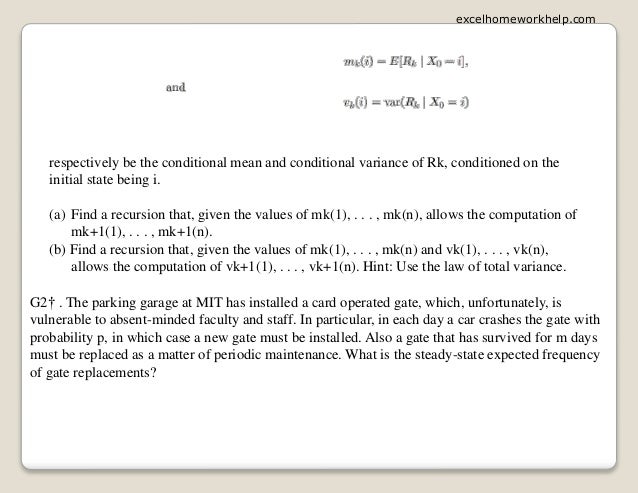
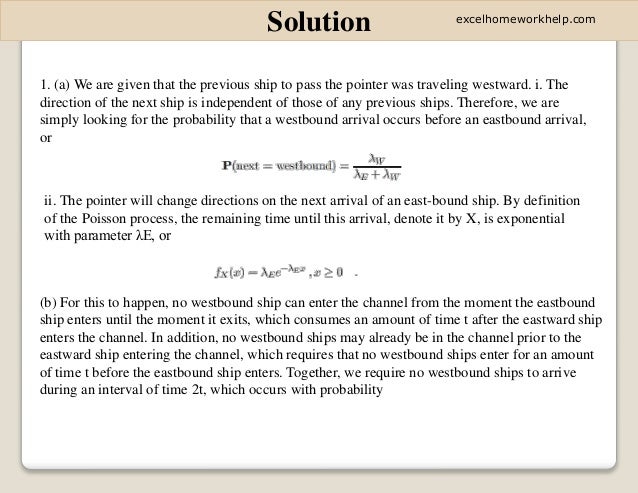
![(c) Letting X be the first-order interarrival time for eastward ships, we can express the quantity V =
X1 + X2 + . . .+ X7, and thus the PDF for V is equivalent to the 7th order Erlang distribution
2. (a) The mean of a Poisson random variable with paramater λ is λ.
E[number of passengers on a shuttle] = λ
(b) Let A be the number of shuttles arriving in one hour. The Poisson parameter now becomes
µ · 1.
(c) To join Poisson process, the arrival rates are summed. The Poisson parameter now becomes λ +
µ.
E[number of events per hour] = λ + µ
(d) The Poisson process is memoryless, and the expected time until the first arrival for the shuttle
bus is
excelhomeworkhelp.com](https://image.slidesharecdn.com/excelhomeworkhelp-220215094202/95/Probabilistic-Systems-Analysis-Homework-Help-8-638.jpg)
![E[wait time | 2λ people waiting] =
(e) Let N be the number of people on a shuttle. The number of people that are on the shuttle
are the number of people that arrive before the first shuttle arrives. The PMF is a shifted
geometric starting at 0:
3. (a) Let Ak be the event that the process enters S2 for first time on trial k. The only way to
enter state S2 for the first time on the kth trial is to enter state S3 on the first trial, remain in
S3 for the next k − 2 trials, and finally enter S2 on the last trial. Thus,
(b) Let A be the event that the process never enters S4. There are three possible ways for A to
occur. The first two are if the first transition is either from S0 to S1 or S0 to S5. This occurs
with probability The other is if The
excelhomeworkhelp.com](https://image.slidesharecdn.com/excelhomeworkhelp-220215094202/95/Probabilistic-Systems-Analysis-Homework-Help-9-638.jpg)
